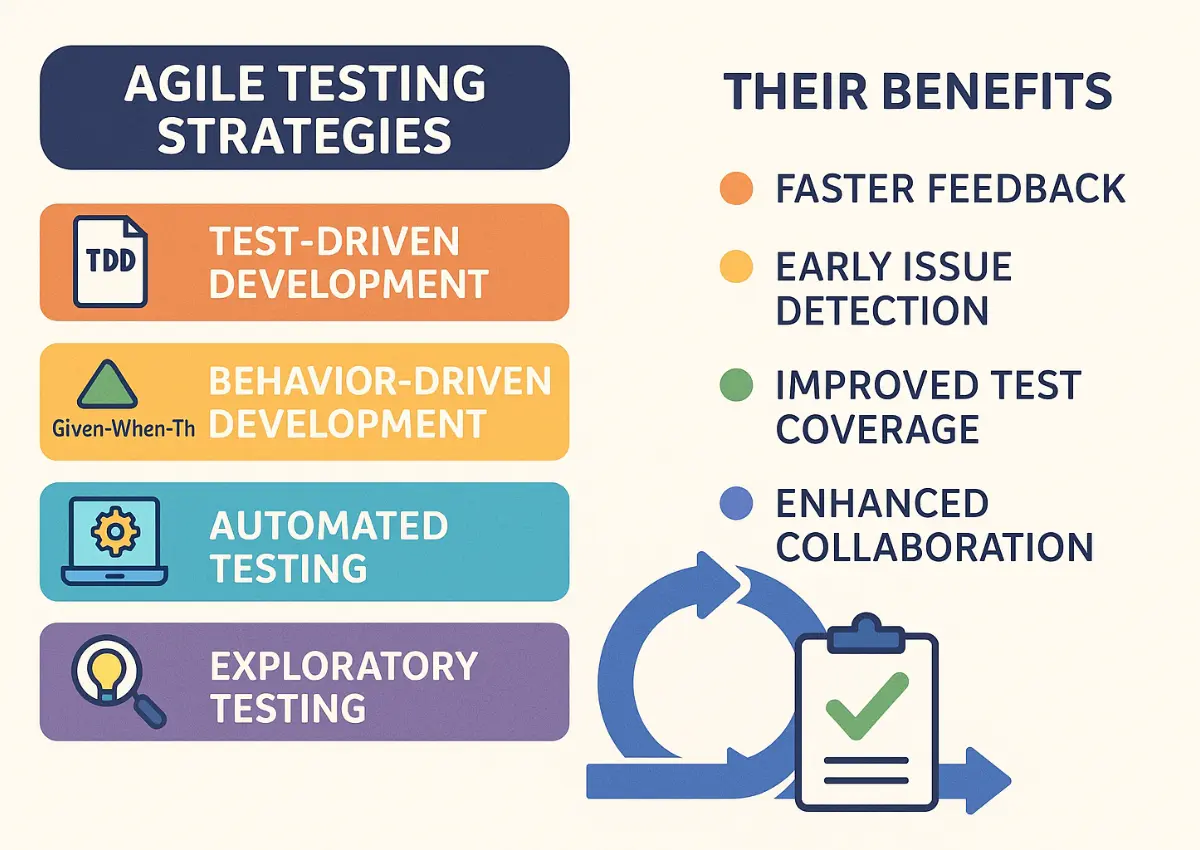Top 7 Agile Testing Strategies & Their Benefits
Agile testing is an integral part of the software development process that can help you build high-quality products at a faster pace. While this may give you a good reason why you should consider agile testing, just following the approach is not going to help. You must also figure out which agile testing approach works best for you.
In this blog, we’ll discuss top seven agile testing strategies and how they can help you let’s begin:
How to Ace Agile Testing: 7 Proven Strategies that can Help
1. Share Responsibilities as a Team
Communication and collaboration are one of the most underrated aspects of agile testing. When done right, they can propel your testing efforts to greater heights.
When you make Agile testing a collective effort instead of pinning the responsibility on the QA team’s shoulders, you bring different skill sets and levels of expertise on board. As a result, you can identify and fix issues much before they become a major problem.
By sharing the agile testing responsibilities across teams, you can also ensure that your QA team has less things on their plate and they can spend their time more productively.
2. Adopt an Agile Testing Mindset
The agile mindset is not applicable to software development alone. It can also help you go a long way in agile testing. Hence, you should start with establishing the agile testing mindset in your team. Here are the values you should encourage in your team:
- Seeing failures as opportunities for learning and growth
- Accepting constructive criticism with an open heart
- Keep looking for better ways for agile testing
Always remember, no tool or strategy can replace people. Even the best tool or strategy will not unless you make a culture shift. Change your mindset and you’ll see a difference.
3. Test More Often
The entire agile testing approach depends on continuous testing. If you keep it at the back burner and don’t test enough to detect and fix issues early on, they may become a major problem later. Hence, it is important for the QA team to test more often. Test before coding, after coding, and even during the code refactoring. It will ensure that the code is simple, well maintained, and adheres to the standards.
4. Make Your Application Code Simple & Easy to Understand
To make the agile testing process simple and efficient, always ensure your code is so simple that anyone can easily make enhancements. Also, it should satisfy all necessary attributes before you run a test case on it. You should also use version control tools to make sure there are no issues during code merging.
5. Test One Feature at a Time
While multitasking can feel tempting, you will only fail big time if you try to do everything at once in agile testing. You will miss out on many critical aspects of your software just because you were everywhere at the same time.
Hence, you must focus on one feature at a time for agile testing. It will ensure you devote enough time and resources for functionalities that matter and don’t miss anything essential. It would be best if you build separate use cases for each feature, and test it thoroughly before moving on to the next one.
6. Provide & Obtain Continuous Feedback
By helping your team stay on track and ensuring you make less mistakes, constant feedback can open doors for success in agile testing. That’s why you should pay attention towards continuous feedback throughout the agile testing process.
You can provide continuous feedback in two forms: automated & exploratory test results and the observations from actual users. You can also ask programmers and customers as they can offer some valuable insights. Here’s what you can ask them:
- Ask programmers if they have enough information to understand what you need.
- Ask customers how you can improve their product’s quality.
These questions can help you gather enough feedback from both your customers and programmers.
7. Include the Testing Team Right from the Beginning
Being proactive is one of the best approaches to agile testing. By including the QA team in software development right from the research and development phase, you can identify and identify key problems early on. They might even have some wonderful suggestions to offer. You should even include your testing team in meetings to help you define the business workflows.
How can These Agile Testing Strategies Help You
While these agile testing strategies appear ordinary, they can redefine the way you develop and test software. Hence, it is essential to understand the importance of agile testing. Following are the ways these agile testing strategies can help you:
- These agile testing strategies can help your team better address the quality issues that may emerge in your software.
- You can ensure testing estimates aren’t overlooked during the requirements stage.
- These agile testing strategies can help you ensure all the requirements are well-defined and measurable.
- Maintaining quality becomes easier as it is now a collective responsibility.
In a Nutshell
Maintaining quality can be an overwhelming process. But with the right approach, we can nail it. Hopefully, the seven agile testing strategies we shared in the blog gave you an overview of how you can improve the agile testing process to deliver quality.
Is there anything else about agile testing I can help you with? Feel free to share in the comments.
for more- fluentidea






